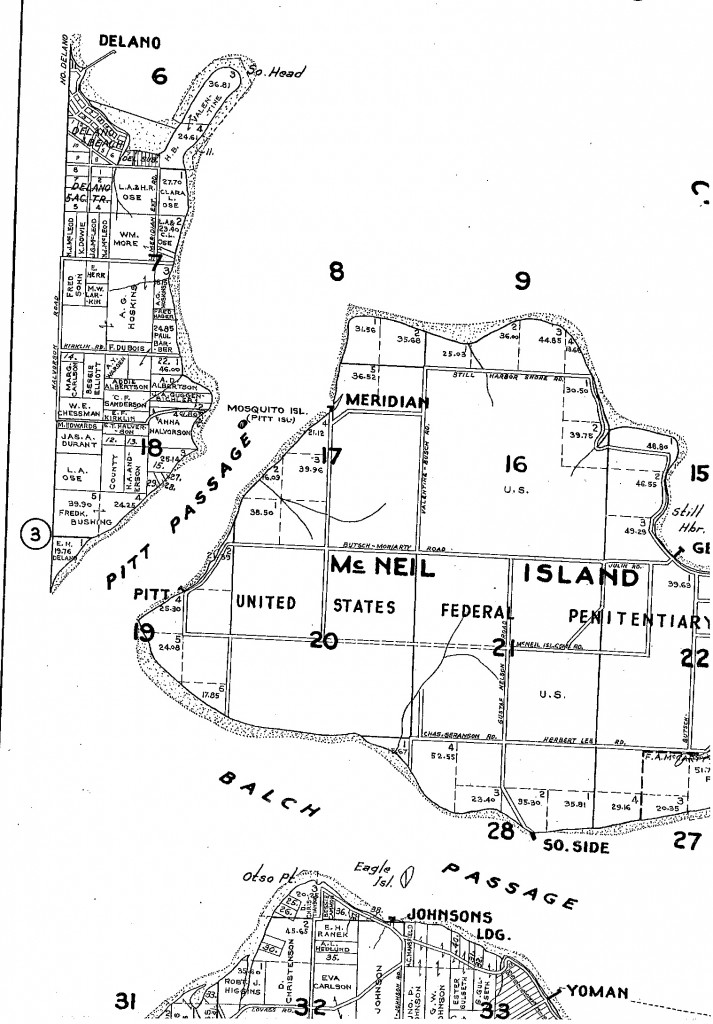 From the desk of Steve Willis, Central Library Services Program Manager of the Washington State Library:
From the desk of Steve Willis, Central Library Services Program Manager of the Washington State Library:
After reading this description of a sea serpent as described on page 7 of the June 30, 1899 issue of The Tacoma Evening News, can anyone out there familiar with the creatures in Puget Sound identify what they really caught?
LOST THEIR SEA SERPENT
Party of Scientists Shipwrecked Off Moskito Island
Collecting Specimens of Giant Barnacles, Sponges, Sea Cucumbers and Other Things For The Ferry Museum
“Ferry Museum has a large and varied assortment of material added to the list of attractions, but not until after a campaign lasting three days, and a shipwreck that lost the entire collection of the first day’s work.”
“An extreme low tide on the straits between the west end of McNeil’s Island and Meridian, off Moskito Island, County Commissioner C.H. Dow has told of wonderful large barnacles, as big as a quart bowl, the beasts having a mouth and jaws on them like the beak of the dinasaurs of the reptilian age. Other strange and wonderful monsters were said to abound in those waters, and a party was fixed up to go after them.”
“Admiral Jacobs, of Puyallup, owner of the fine steam yacht Strea, took out his boat, with Professor Harlan I. Smith, of the New York Museum of Natural History; Professor Gilstrap, curator of the Ferry Museum; Commissioner Dow, Frank R. Baker and Mrs. Dow, Mrs. Baker and Mrs. Jacobs.”
“The barnacles were all that had been promised, and a big collection of them are now in place at the Museum, where their vicious snapping and terrific looking beaks are a terror to beholders. There is also a fine assortment of sea cucumbers, sea eggs, star fish; sea weed, shells of various kinds, some sponges and other specimens of much interest.”
“The catch of the season, however, was lost by the capsizing of the boat: the sea serpent, one of the most terrible and striking looking of the kind ever caught.”
“The animal, with a lot of other stuff, was in a yawl boat in tow of the steamer, when the struggles of the beast upset the boat, losing the entire collection in the Sound.”
“The sea serpent was of a brilliant green color, so dazzling that it appeared as though the light shone through him. His body was wide and thin, with two immense fins immediately back of the head, giving him a ferocious appearance when seen from the front. His tail was set vertical, with three saw-like teeth, and with one fin immediately forward of the tail on the back.”
“On his brilliant green sides were irridescent spots of red, yellow, white and black, that appeared to come and go as he splashed about in the water, which was lashed into foam as he sped about in the shallows where he was finally caught.”
Some updates to this news article:
Moskito Island has also been known as Mosquito Island, Enriquita Island, and today is called Pitt Island, according to Gary Fuller Reese.
In the book Island Memoir, Betsey John Cammon tells us the town of Meridian used to be on the mainland just across Pitt Passage from McNeil Island. The town actually jumped across the water and was established as the U.S. Post Office for McNeil from about 1903 to 1936, when the island was taken over as a prison site. Meridian’s McNeil Island site (along with Mosquito/Pitt Island) appears on the 1941 Metsker’s Atlas of Pierce County, Washington. WSL has an extensive collection of Metsker’s maps, both loose and bound.
Harlan Ingersoll Smith (1872-1940), the visiting archaeologist, eventually settled in British Columbia and made Pacific Northwest Native cultures his focus of interest.
William Henry Gilstrap (1849-1914) was a former portrait painter who became the curator of the Ferry Museum and Secretary of the Washington State Historical Society.
The Tacoma Evening News ran from 1889 to 1903, and can be counted as one of the many ancestors of today’s News Tribune, as seen on WSL’s newspaper history chart.






